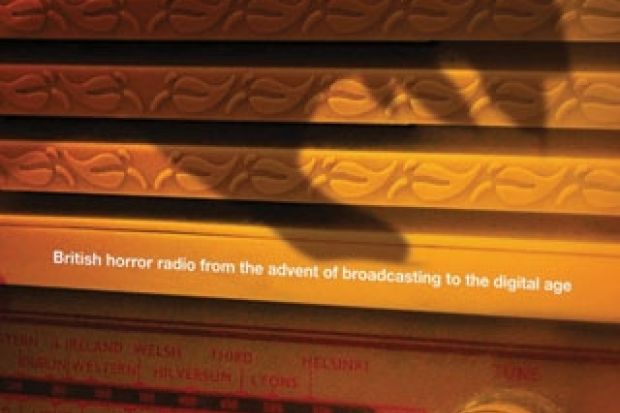The most effective horror stories take us by surprise. Dead Men’s Teeth is a good example. It is an unpleasant tale involving teeth transplants conducted by a mad dentist without the aid of a proper anaesthetic. The surprise has nothing to do with the content, however, but arises from the revelation that, far from being a contemporary piece of torture porn, Dead Men’s Teeth was a BBC radio play transmitted in 1946.
British horror radio of this kind has rarely been discussed in any detail. Its obscurity derives in part from the fact that most pre-1960s radio drama, horror-themed or otherwise (including Dead Men’s Teeth), has been lost. But it surely also has something to do with the BBC appearing an unlikely home for such nastiness.
With the aid of a trawl through BBC archives and deft reconstructions of horror plays from surviving scripts, Listen in Terror demonstrates that such sensationalist tales were a significant feature of BBC radio programming from the 1920s through to the 1950s, with horror especially popular during the Second World War.
Another surprise is the importance of US sources for British horror radio, notably in the groundbreaking Appointment with Fear series that began transmission in 1943. Indeed, the Man in Black, the quintessentially British horror host who introduced the Appointment with Fear plays and who has made regular appearances on British airwaves ever since, began as a character in a US radio series.
Richard Hand is particularly good at capturing how US material was anglicised, often with an enhancement of the stories’ nastier elements, for UK audiences. Radio emerges from this account as a medium particularly suited to the uncanny, with its disembodied ghostly voices and other possibilities for expressive uses of sound.
The emphasis throughout Listen in Terror is firmly on the radio dramas themselves, which means that some of the broader contexts in which they were produced are glimpsed only briefly, perhaps in some cases too briefly. Clearly there was resistance to horror radio within the BBC; for instance, Hand provides a memo from an executive concerned that programmes were being made for “an audience of sadistic morons”. One is left wondering how it was that these dramas, or at least the more graphic-sounding ones, were considered suitable for transmission into the domestic household, especially during the war.
The broader question, moreover, is whether this kind of drama was thought of as “horror” at the time. Hand shows that much of the content of these plays was crime-based rather than supernatural or explicitly horrifying, and the extent to which they were able to dodge the disreputable designation of horror is surely worth exploring. It is certainly the case that the word “horror” does not feature in any play title cited by Hand from the 1930s or 1940s. By contrast, Listen in Terror’s discussion of post-1960s British horror radio, while full of interesting details, offers fewer surprises, if only because the material is better known, is regularly repeated on BBC Radio 4 Extra, and projects a more confident sense of itself as part of the horror genre.
Listen in Terror provides a lively, enjoyable and in places provocative overview of its subject. One hopes that others will be encouraged to explore further what has been established here as a rich seam in British popular culture.
Listen in Terror: British Horror Radio from the Advent of Broadcasting to the Digital Age
By Richard J. Hand
Manchester University Press, 256pp, £70.00
ISBN 9780719081484
Published 30 April 2014
Register to continue
Why register?
- Registration is free and only takes a moment
- Once registered, you can read 3 articles a month
- Sign up for our newsletter
Subscribe
Or subscribe for unlimited access to:
- Unlimited access to news, views, insights & reviews
- Digital editions
- Digital access to THE’s university and college rankings analysis
Already registered or a current subscriber? Login





